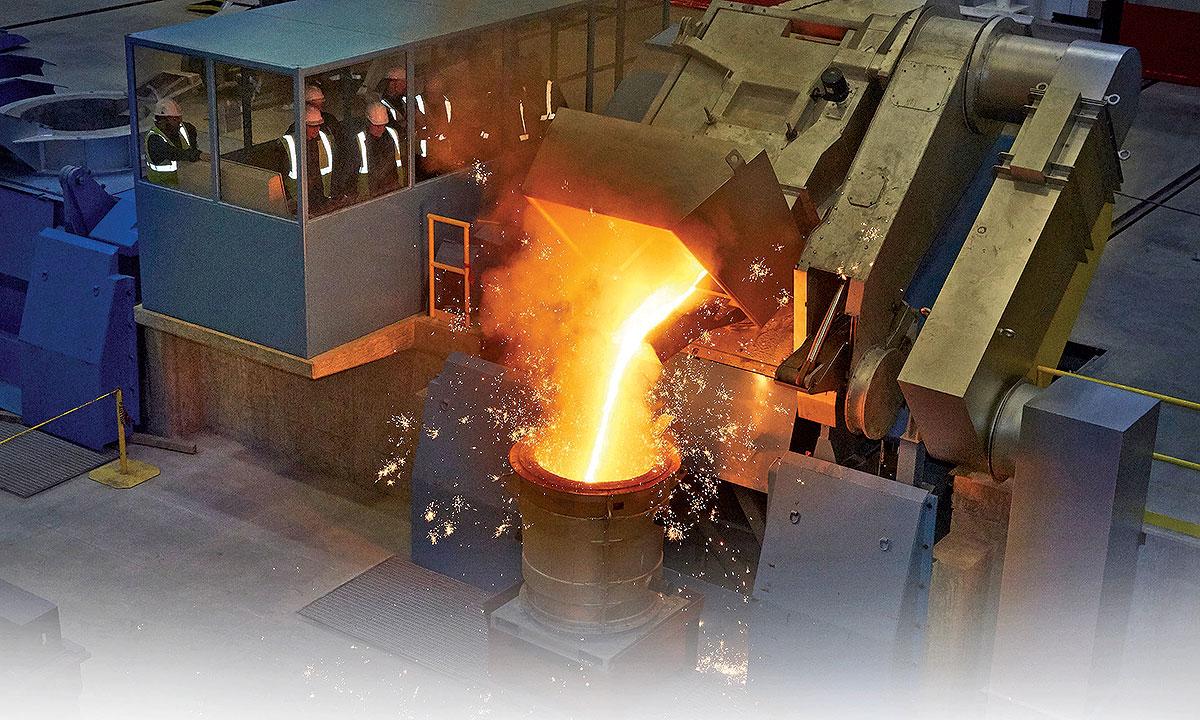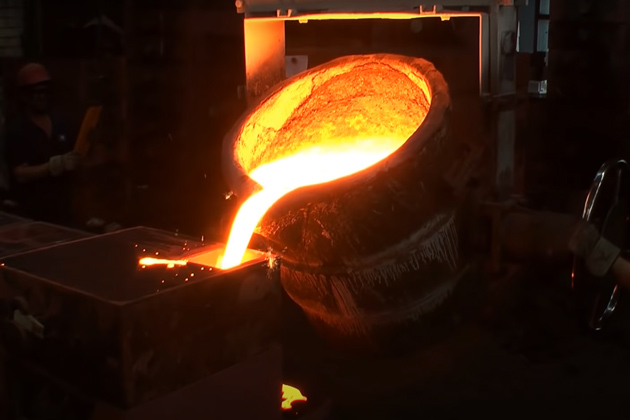Discover the Cutting-edge Strategies Used in a Metal Foundry for Superior Casting Outcomes
In today's affordable manufacturing landscape, metal foundries are significantly adopting cutting-edge techniques to enhance spreading outcomes - Metal Casting. Advanced computer system simulations enable precise modeling of molten metal behavior, while 3D printing allows fast production of intricate mold and mildews. In addition, environment-friendly materials and automation simplify operations. These developments guarantee significant enhancements in effectiveness and quality assurance. The impact of these modern technologies on sustainability and manufacturing techniques continues to be to be fully discovered.
Advanced Computer System Simulations in Metal Casting
Advanced computer simulations have actually revolutionized the metal spreading process by enhancing precision and effectiveness. These innovative tools enable designers to develop virtual versions of actors elements, enabling them to evaluate and forecast the behavior of molten metal during the casting stage. By mimicing different criteria such as temperature, flow price, and air conditioning rates, makers can determine prospective flaws before physical manufacturing starts.
This proactive strategy lowers waste and decreases costly errors, ultimately causing enhanced item quality. Furthermore, simulations assist in the optimization of mold and mildew layouts, making certain that they fulfill the particular needs of each project. The combination of computational liquid dynamics (CFD) and limited component evaluation (FEA) more adds to the precision of these simulations, giving understandings that were previously unattainable. Because of this, advanced computer system simulations have ended up being a crucial part of modern-day metal foundries, significantly progressing the market's abilities.
3D Printing for Mold And Mildews and Patterns
3D printing has actually arised as a groundbreaking technique for creating molds and patterns in the metal foundry industry. This modern technology enables the quick production of complex geometries that conventional manufacturing approaches struggle to accomplish. By utilizing additive manufacturing, foundries can develop complex designs with minimized preparations and material waste. The ability to generate molds as needed permits for greater adaptability in design models, promoting faster prototyping and adjustments.
Furthermore, 3D printing can utilize a selection of products, including plastics and steels, customized to specific casting demands. This flexibility enhances the precision of molds, leading to premium casting outcomes with boosted surface finishes. Additionally, the decrease in the variety of parts called for streamlines setting up procedures, further enhancing manufacturing effectiveness. As foundries remain to embrace 3D printing, they are positioned to redefine industry criteria, leading the way for advancement and improved efficiency in metal spreading operations.
Eco-Friendly Materials and Processes
As the metal foundry market deals with enhancing pressure to minimize its ecological footprint, the adoption of green materials and processes has become crucial. Shops are now checking out sustainable alternatives to conventional materials, such as using recycled steels and bio-based binders. These materials not just minimize waste however additionally lower energy usage during manufacturing.
Additionally, innovations in sand spreading methods have actually brought about making use of artificial sands that are less damaging to the atmosphere. Factories are likewise applying cutting-edge processes like liquified metal treatment that reduces exhausts and enhances the top quality of actors products.
Water-based layers have actually changed poisonous solvents, promoting a much safer job atmosphere. By incorporating these eco-friendly practices, metal foundries can significantly lower their eco-friendly impact while preserving premium casting results. This shift not only benefits the setting however likewise lines up with the expanding customer demand for lasting manufacturing options
Automation and Robotics in Foundry Operations
While the metal foundry sector welcomes innovation, the integration of automation and robotics is transforming procedures substantially. Automated systems streamline procedures such as mold production, metal putting, and casting finishing, greatly improving effectiveness. Robotics help with the handling of heavy materials, minimizing the threat of office injuries and making sure much safer environments.

Additionally, making use of automated led automobiles (AGVs) maximizes material transport within facilities, making sure timely shipment of elements to appropriate workstations. By implementing these innovations, foundries can adjust to varying needs with higher dexterity, eventually bring about enhanced productivity and competition in the marketplace. As automation and robotics continue to evolve, they hold the potential to redefine typical foundry techniques click here to read and drive additional developments in casting techniques.
Real-Time Monitoring and Quality Assurance Techniques
The advancements in automation and robotics have led the way for much more sophisticated strategies to high quality guarantee in metal foundries. Real-time tracking systems make use of sophisticated sensing units and information analytics to track essential criteria throughout the casting process. These systems continually evaluate variables such as temperature level, pressure, and material make-up, allowing prompt detection of discrepancies from established standards.
Quality assurance methods now include artificial intelligence algorithms that examine historical data to predict potential issues before they occur. This aggressive method reduces waste and boosts general production efficiency. Additionally, integrated feedback loopholes permit for quick changes, making sure that each casting meets strict top quality needs.
The implementation of digital doubles-- virtual replicas of physical assets-- has actually also changed quality control, permitting designers to simulate and optimize procedures in real-time. With each other, these innovative techniques significantly enhance the reliability and high quality of spreadings, establishing new sector requirements in metal foundry procedures.
Frequently Asked Inquiries
What Types of Metals Are Generally Cast in Factories?
Commonly cast steels in foundries consist of light weight aluminum, bronze, brass, and iron. Each metal shows unique properties, making them suitable for various applications, such as automotive components, machinery, and artistic sculptures, enhancing their versatility in production.

How much time Does the Casting Refine Commonly Take?
The spreading process generally takes several hours to days, relying on aspects such as the complexity of the mold, sort of metal utilized, and cooling demands. Each phase affects the general duration considerably.
What Safety and security Steps Are in Place for Foundry Employees?

Just how Are Problems in Castings Identified and Addressed?
Defects in spreadings Full Report are determined with aesthetic inspections and non-destructive screening approaches. As soon as detected, foundry employees resolve them by refining procedures, readjusting product structures, and executing restorative actions to assure quality and compliance with requirements.
What Is the Cost Array for Metal Casting Providers?
The cost range for metal spreading solutions usually differs between $1 to $10 per extra pound, depending on aspects such as product kind, intricacy of the style, and production volume, impacting general rates significantly.
In today's competitive production landscape, metal foundries are increasingly embracing cutting-edge methods to improve spreading results. As the metal foundry industry faces increasing pressure to minimize its environmental impact, the adoption of green products and processes has come to be essential. Shops are now discovering lasting options to typical materials, such as using bio-based binders and recycled metals. By integrating these green practices, metal foundries can noticeably reduce their environmental effect while maintaining top quality casting outcomes. The improvements in automation and robotics have actually led the method for extra advanced strategies to high quality guarantee in metal foundries.